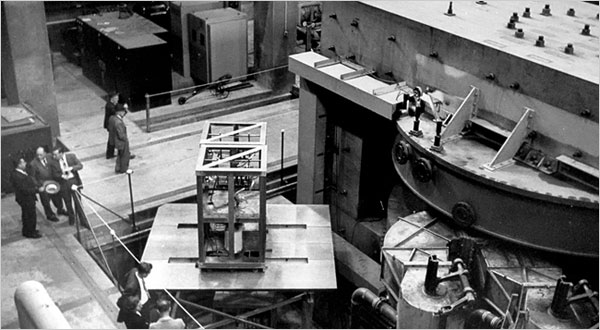Raymond Dujack was a young lab technician at the Special Alloyed Materials (SAM) Laboratories at Columbia University. Dujack had withdrew from Massachusetts Institute of Technology (MIT) in the summer of 1943 after completing his freshman year and went home to New York to await his inevitable call to enter the armed services. During his wait, he took a job at Columbia University after answering a want-ad in the New York Times for a “high school grad. good at math.” He was hired as a lab tech to work in the SAM Labs in Havemayer Hall on the campus.
As a lab technician, he constructed chemical apparatus and performed experiments. Dujack was never informed as to what he was working on, never told what "S.A.M." meant, nor ever heard the term "Manhattan Project." Security was so tight that chemicals were only known by code names. Also, to enter the lab, a photo ID was shown, which would be exchanged for a photo badge. The badges were not allowed out of the lab, and Dujack was constantly warned not to tell any of his other friends at Columbia that he was working on a classified project. Only when the atomic bomb was dropped on Hiroshima was Dujack informed of the nature of his work.
In February 1944 Dujack left SAM to enter the Army. He attended infantry basic training and was assigned to the Army Specialized Training Program (E.E.) at Penn State. He graduated from ASTP after V-J Day, and was discharged in June 1946.
Dujack returned to MIT, and graduated with a B.S. in Economics and Physics. He also received a MSEE from Columbia University in 1955. During his career, he worked in aerospace industry; telecommunications; investment banking; and the Federal Communications Commission.





